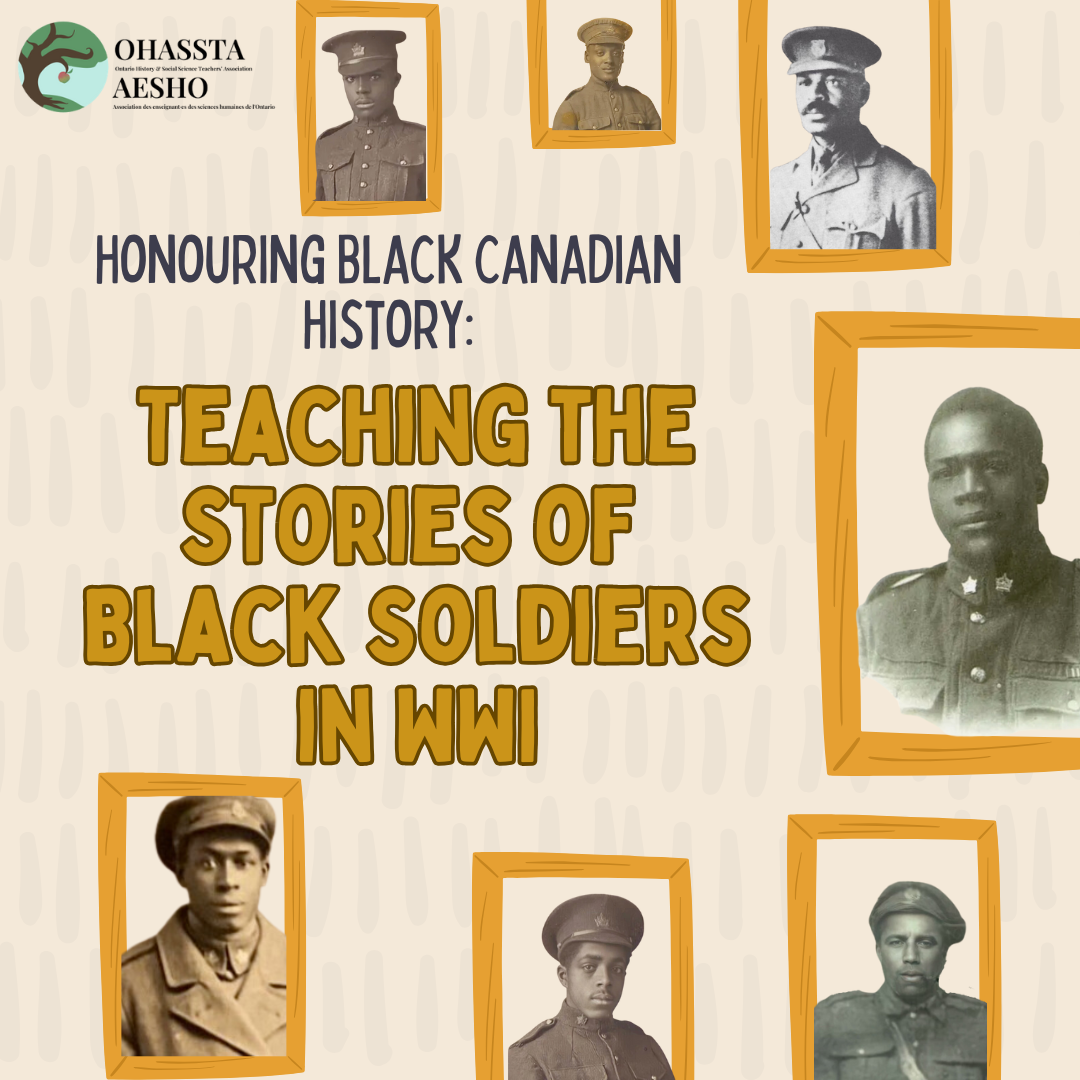
While Black history is an integral part of studying, learning and teaching Canadian history, the month of February provides teachers the opportunity to amplify the Black experience in our classrooms. It can be very tempting to focus student activities on the Black American experience but we must ensure that our students are exploring the unique histories, contributions, and challenges of Black Canadians as students deserve to have a deeper understanding of the diverse experiences within the broader Black diaspora in Canada.
In many grade 10 History classes, February typically intersects with the teaching of the First World War, so it is a great opportunity to better include the experiences of Black soldiers in Canada’s military and there are numerous websites that have curated valuable resources. The Government of Canada has Black Canadians in uniform- a proud tradition, which provides lesson plans and resources on the experiences of Black soldiers from pre-First World War era to the post-Second World War era. Black Canadian Veterans collates the stories of Black Canadians in the military during war and peace time. A Black People’s History is a project led by Dr. Afua Cooper, that seeks to develop resources to reflect the African Canadian experience from 1604 forward. These are just a few resources to help inform the Canadian history classroom, but the Government of Canada has also compiled a thorough list of organizations and educational resources devoted to promoting the history of Black Canadians.
The establishment of the No. 2 Construction Battalion, the largest all-Black unit in Canadian history, was discussed in the parliamentary debates on February 3, 1916 and again on March 24, 1916. The discussion over a segregated battalion provides interesting insight into the excuses given by Minister of Militia and Defence, Sam Hughes and the allyship of some Members of Parliament. Students can examine this primary source and evaluate the nuances of the debate, while applying historical thinking skills.
Another great strategy to better include the experiences of Black soldiers in the First World War is to have students examine war records. Once you have the name of a soldier, and for more common names, a birth year or location of residence, searching Library and Archives Canada’s database is pretty straightforward. By having students explore the personal histories of the soldiers through their war record, students can see first hand the cost of war. It’s important to provide a graphic organizer to help the students better manage what to look for. And ideally you’ll want the students to work in small groups as the multitude of pages in a war record can be, at first glance, daunting.
Once they start to focus in on the details within the war record, amazing details can be found. Page 25 of Ethelbert “Curley” Christian’s war record shows a doctor’s notations detailing Christian’s quadruple amputation. On Page 25 of Miles Dymond’s war record, there’s specific details about the physical toll trench warfare has had on him after having been buried by a shell. The doctor notes that Dymond experiences shortness of breath and that he appears nervous and easily startled by sudden noises.
When providing students with war records, it’s important to first vet the record to ensure that it has sufficient details for the student to explore. Some soldiers have very little accounted for, and others, like Lieutenant-General Sir Arthur Currie, have so much that it would take students weeks to parse through.
Below are the links to some First World War Black Canadian soldiers whose war record students can be encouraged to explore:
Christina Iorio is a teacher with the York Catholic District School Board and is a regular contributor to social media platforms regarding all things history and social science.
Instagram: https://www.instagram.com/therealmsiorio/
